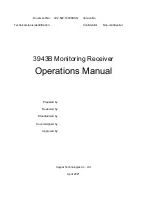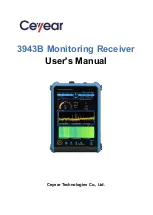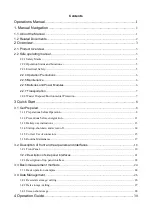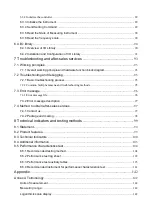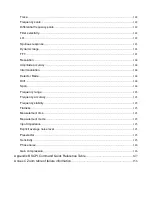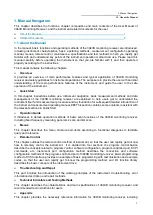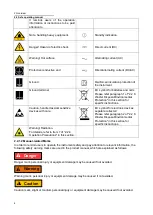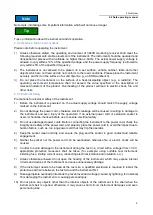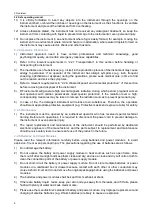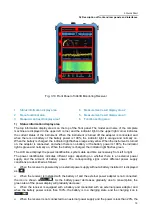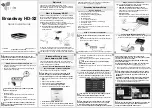
2 Overview
2.2 Safe operating manual
5
Note mark, indicating some important information which will not cause danger.
Tips on information about the instrument and its operation.
2.2.2 Operation Status and Locations
Please note before operating the instrument:
1) Unless otherwise stated, the operating environment of 3943B monitoring receiver shall meet the
following requirements: stable placement of the instrument. The instrument should be operated and
transported at places with an altitude no higher than 4,600m. The actual power supply voltage is
allowed to vary within ±10% of the specified voltage, and the power supply frequency is allowed to
vary within ±5% of the specified frequency.
2) The instrument is not allowed to be placed on a wet surface, vehicle, cabinet, table and other
objects which are not fixed and do not conform to the load conditions. Please place the instrument
securely and fix it on the surface of a solid object (e.g., an ESD workbench).
3) Do not place the instrument on the surface of a heat-dissipating object (e.g., a radiator). The
operating environment temperature shall not exceed the value specified in the description of
relevant indicators of the product. Overheating of the product will lead to electric shock, fire and
other risks.
2.2.3 Electrical Safety
Precautions for electrical safety of the instrument:
1) Before the instrument is powered on, the actual supply voltage should match the supply voltage
marked on the instrument.
2) Do not damage the power cord, otherwise electric leakage will be caused, resulting in damage to
the instrument and even injury of the operators. If an external power cord or extension socket is
used, it should be checked before use to ensure electrical safety.
3) Do not use damaged power cords. Before connecting the instrument to the power cord, check the
integrity and safety of the power cord, and properly place the power cord to avoid the impact due to
human factors, such as, too long power cord that may trip the operator.
4) Keep the socket clean and tidy, and ensure the plug and the socket in good contact and reliable
engagement.
5) Neither the socket nor the power cord can be overloaded, otherwise fire or electric shock will be
caused.
6) In order to avoid damage to the instrument during the test in a circuit with a voltage Vrms> 30 V,
appropriate protective measures shall be taken (for example: using suitable test instrument,
installing fuse, limiting current value, conducting electrical isolation and insulation, etc.).
7) Unless otherwise allowed, do not open the housing of the instrument, which may expose internal
circuits and devices of the instrument and cause unnecessary damage.
8) If the instrument needs to be fixed at the test site, a qualified electrician is required to install the
protective earth wire between the test site and the instrument first.
9) Take appropriate overload protections to prevent overload voltage (caused by lightning, for instance)
from damaging the instrument or causing personal injury.
10) Do not place any objects other than the internal objects of the instrument in the shell when the
instrument shell is opened, otherwise, it may cause short circuit, instrument damages and even
personal injuries.
Note
Tip
Содержание 3943B
Страница 2: ...3943B Monitoring Receiver User s Manual Ceyear Technologies Co Ltd...
Страница 4: ......

